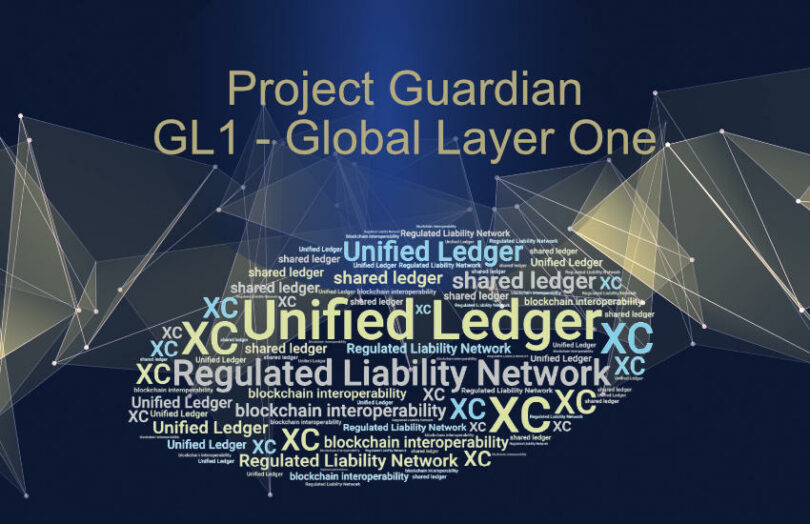Today the Monetary Authority of Singapore (MAS) announced a significant expansion of its Project Guardian, which explores tokenization using public blockchain. The most significant aspect is a new initiative called Global Layer One (GL1). It’s designed as an “open, digital infrastructure enabling cross border transactions and global liquidity pools.” BNY Mellon, JP Morgan, DBS and MUFG are involved.
Before exploring GL1, MAS announced five more use cases. They include a JP Morgan and Apollo initiative on tokenized funds. And Citi, Fidelity and T Rowe Price using FX and oracles for trades on Avalanche. We covered both of those today.
A Global Layer One (GL1)
Putting the ‘Global Layer One’ in context, there are three other major initiatives along similar lines. They are the Regulated Liability Network (RLN), the BIS concept of a Unified Ledger and the IMF’s XC concept for cross border payments. And by the way, the IMF is joining Project Guardian to provide policy input.
While the announcement is thin on details, we believe a key feature of GL1 is the ‘open’ part. We’d speculate that this might be a quasi public blockchain, probably using proof of authority. Any end user can access the network provided they do KYC. That’s quite different from the RLN, which is more about creating interoperability between disparate wholesale networks and ledgers. We believe the Unified Ledger is also wholesale focused.
“To fully realise the potential of tokenised markets, and achieve network effects, a scalable digital infrastructure is needed,” said Mr Leong Sing Chiong, Deputy Managing Director (Markets and Development), MAS. “GL1 will provide a foundational digital backbone and bring markets together with similar principles of openness and accessibility as the public internet. MAS welcomes additional policymakers and financial institutions to participate in the design phase of the GL1 initiative and contribute towards its development.”
GL1 as an open blockchain network
If that’s not enough to convince you, here’s the rationale behind the public blockchain thesis. Firstly Layer 1 is typically a phrase used in public blockchain circles. A key differentiator of MAS’s Project Guardian has been allowing institutions to test the use of public blockchains. It’s all done in a regulated way with KYC and layers of permissioning. One enterprise recently said to Ledger Insights that MAS is anti public blockchain. Based on Project Guardian, we disagree. However, its statements position it as not-so-keen on cryptocurrency.
It’s possible to have a public blockchain without cryptocurrency. But that requires strong and ‘trusted’ governance. Regulated institutions might operate all the nodes. Credit Agricole and SEB are doing something similar with So|bond.
In related news, today MAS published a paper on blockchain interoperability. Most of the document explores an interlinked network model (INM) which requires bridges. The concern is that bridges are notoriously vulnerable and are currently the source of most hacks on public blockchains.
Before diving into INM, MAS explores the other options. One is a common infrastructure, which MAS previously trialed in Project Dunbar for cross border CBDC. Another is a layered model along the lines of Ethereum and its sidechains. The paper notes that this ensures that “costs remain viable.”
Other new Project Guardian initiatives
Apart from the JP Morgan and Citi projects, another new tokenization initiative is a treasury management solution from Ant Group. HSBC recently partnered Ant to trial something similar in Hong Kong. BNY Mellon and OCBC are trialing a cross border FX solution across networks using different technologies. Bear in mind that BNY Mellon custodies reserves for the USDC stablecoin.
U.S. asset manager Franklin Templeton is the fifth use case addition. It already manages the largest tokenized traditional asset fund (more than $300m) on a public blockchain. Now it’s trialling Singapore’s new Variable Capital Company (VCC) combined with fund tokenization.
In fact, MAS has started a new VCC track for Project Guardian because eight institutions are engaged in VCC fund tokenization projects. We previously reported on UBS trialing tokenized funds using a VCC structure in addition to Schroders.






